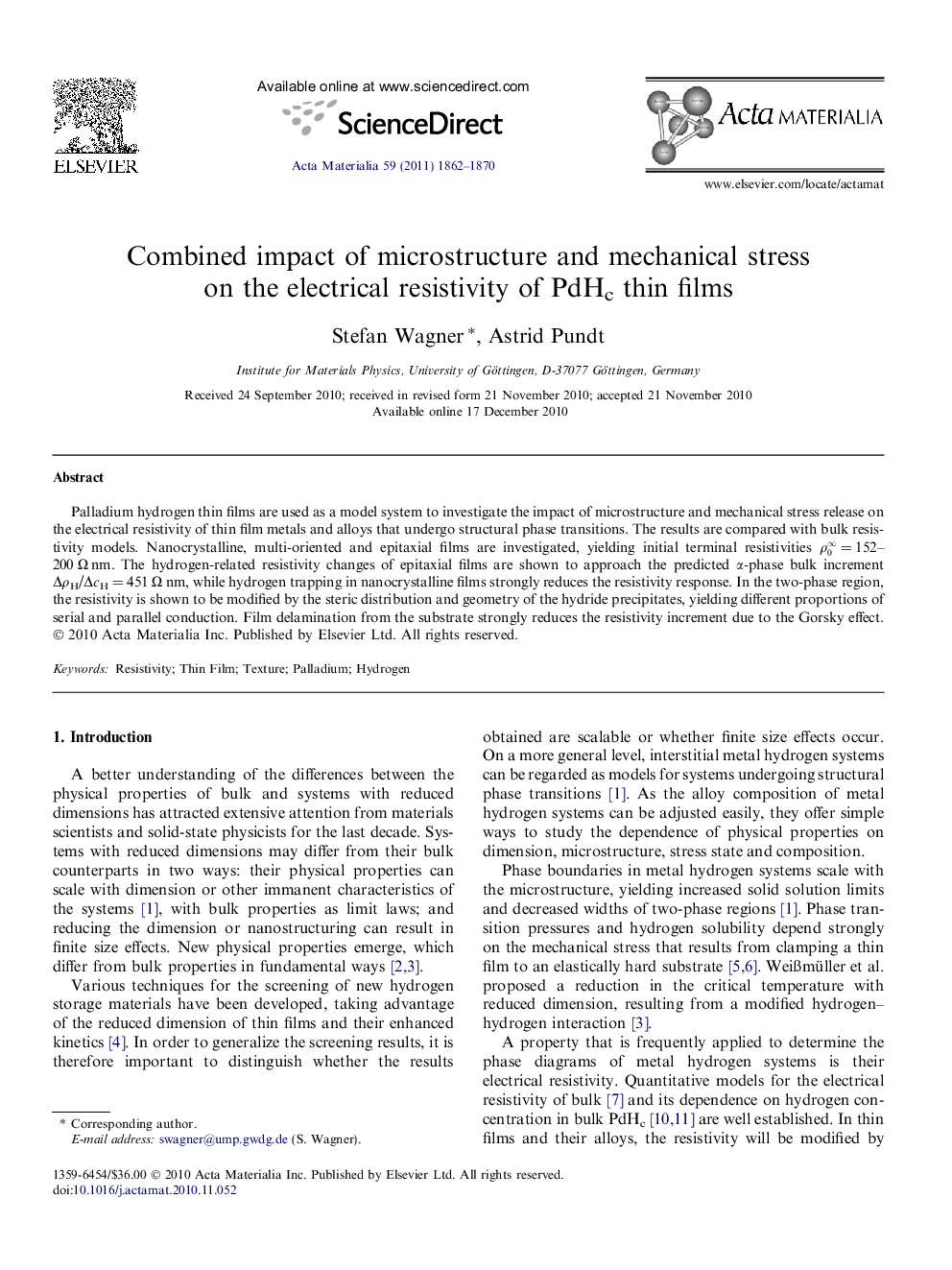| Article ID | Journal | Published Year | Pages | File Type |
|---|---|---|---|---|
| 1447521 | Acta Materialia | 2011 | 9 Pages |
Palladium hydrogen thin films are used as a model system to investigate the impact of microstructure and mechanical stress release on the electrical resistivity of thin film metals and alloys that undergo structural phase transitions. The results are compared with bulk resistivity models. Nanocrystalline, multi-oriented and epitaxial films are investigated, yielding initial terminal resistivities ρ0∞ = 152–200 Ω nm. The hydrogen-related resistivity changes of epitaxial films are shown to approach the predicted α-phase bulk increment ΔρH/ΔcH = 451 Ω nm, while hydrogen trapping in nanocrystalline films strongly reduces the resistivity response. In the two-phase region, the resistivity is shown to be modified by the steric distribution and geometry of the hydride precipitates, yielding different proportions of serial and parallel conduction. Film delamination from the substrate strongly reduces the resistivity increment due to the Gorsky effect.
